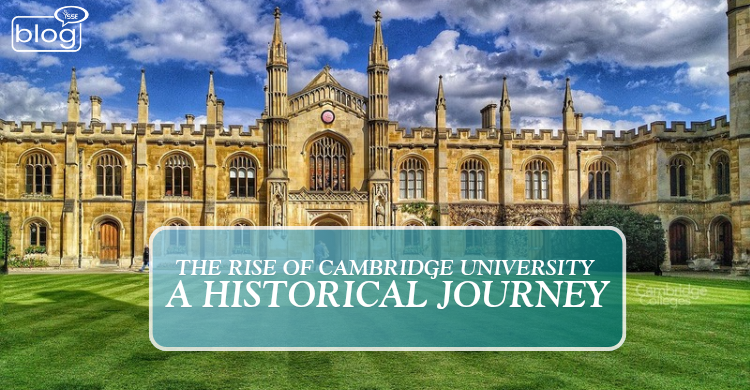People everywhere know Cambridge because of its famous university and long history. Cambridge University is one of the top five universities in the world with over 30 undergraduate programs and more than 300 postgraduate options across 31 colleges. Founded over 800 years ago, it’s the third oldest university still running today.
But do you know Cambridge University started because of fights between students and locals at Oxford? Back in 1209, some scholars and teachers left Oxford because of trouble with the locals and settled in Cambridge. By 1226, they had set up a proper system for learning and started regular classes and also chose a Chancellor to lead them.
Cambridge University Through the Centuries
Medieval Times
In the 1340s, the Black Death hit Cambridge, killing nearly half the people. Despite this the university kept growing in the 1400s, especially after King’s College was founded in 1441. It was bigger than earlier colleges and had more rights. Interesting fact is that back then teaching was done by “Masters”—students who had already completed the course. Learning was mostly about “reading” and “explaining texts”.
16th and 17th Centuries
In 1546, King Henry VIII founded Trinity College and changed the university’s curriculum to match his newly established Church of England. In 1584, Cambridge University Press was created, another trivia Cambridge University Press is the oldest publishing press in the world.
The 17th century was a time of big discoveries. Sir Isaac Newton studied there, scientists figured out how blood circulates, and new ways of navigating and making maps were created.
18th Century
During the 18th century, Cambridge shifted from a focus on classical studies to more structured teaching methods like lectures and tutorials. Many famous figures studied here such as poet Richard Bentley and several graduates who later signed America’s Declaration of Independence.
Cambridge University in the Modern Era
The 19th Century
In 1856, the Cambridge University Act introduced new subjects like Theology, History, and Modern Languages. Scientists like Charles Darwin, JJ Thomson, and James Maxwell made some major discoveries during this time. This was also the time when women were first allowed to study at Cambridge.with the first women’s college called Girton College opened in 1869. Emily Davis played a crucial role for this women’s college.
The 20th Century
The 20th century brought a lot of changes to Cambridge. In 1924, the university gave out its first PhD degree. Although women had been taught at the colleges earlier, in 1948 they were finally allowed to take exams and earn degrees. It was also a time of huge scientific success. They discovered vitamins, how to split the atom, and unlocked the structure and sequencing of DNA.
Cambridge University in World War I & II
During World War I, Cambridge played a big role with nearly 14,000 members joining the war and nearly 2,400 of them lost their lives. In World War II the university was lucky enough to avoid damage from air raids but over 60% of the professors left for the fight, making teaching much harder.
The University of Cambridge
The University of Cambridge has a total of 31 colleges that are located all around the city of Cambridge. Cambridge has been home to countless Nobel Prize winners and groundbreaking scientific discoveries. The university also consists of museums and collections of many treasures, libraries, chapels, playhouses, theatres as well as a vast range of sports teams.
Cambridge is still making important discoveries and sharing knowledge with the world. People visit its famous old colleges, and many students hope to be part of its history one day. Hope you will gather some knowledge from this blog.
To read more blogs, Click here
Writer
Anika Sharmila
Intern, Content Writing Department
YSSE

